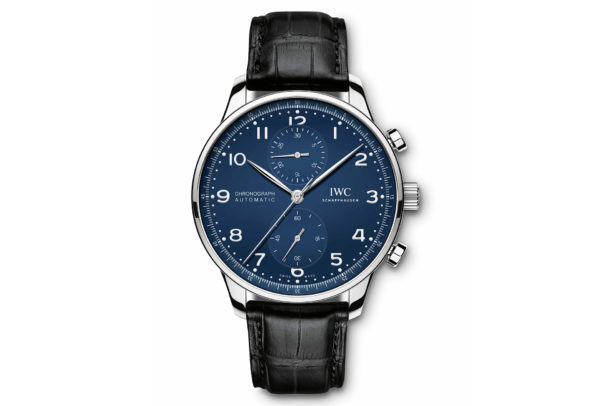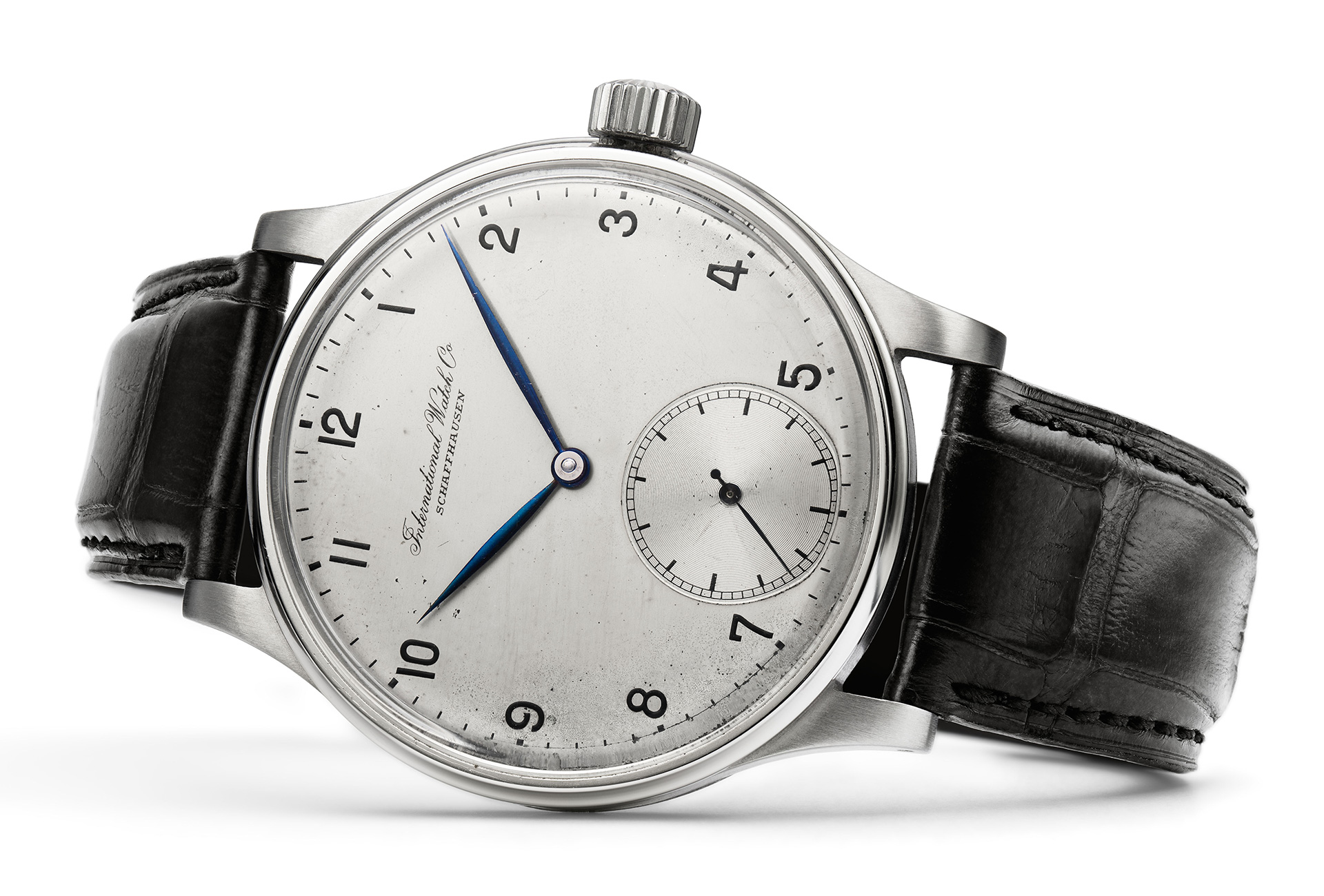It’s a modern-day icon, but before becoming a classic that any self-respecting collection must have, the Portugieser was at the vanguard of design. Distinguished by what was, by the standards of the day, an exceptionally large case together with a fabulously precise movement, it is one of the earliest wristwatches from IWC. Now a pillar of the brand, it lends itself to a multitude of versions, from a simple automatic to the highest summits of complicated watchmaking.

The Portugieser came about in 1939 in response to a request made to the Schaffhausen headquarters by two wholesalers in Lisbon, Portugal, Messrs Rodrigues and Teixera, for a watch that would match the precision of a marine chronometer. It would be sold to captains and officers in the Portuguese merchant navy and, they insisted, would be worn on the wrist and preferably large in size. Ticking all these boxes was a seemingly impossible challenge, until someone at the manufacture came up with the bold idea of putting a Calibre 74 “hunter” movement into a wristwatch case. With its small seconds display forming a right angle with the crown and winding stem at 3 o’clock, this movement was perfectly adapted to wearing on the wrist. Style-wise, the new watch sported an elegantly narrow bezel, a railroad minute track, Arabic numerals and long, thin leaf hands. Yet despite its simple, classic exterior, Reference IW325 defied expectations with its huge size: an astonishingly large 41.5mm at a time when the majority of watches measured a diminutive 35mm in diameter.
Revival
Some 300 watches equipped with Calibre 74 were made, with production ceasing in 1951. Additionally, just over 300 more were produced between 1944 and 1970, this time fitted with a Calibre 98 pocket watch movement. In the 1980s, the Portugieser dropped off the radar and production ground to a halt. It would return in 1993, thanks to watchmaker Kurt Klaus, with a Jubilee limited edition for the brand’s 125th anniversary. Except for a 42mm case diameter, every feature of the original remained intact, from the clean dial to the thin bezel and leaf hands. For the first time ever, a sapphire exhibition back allowed a view of the contemporary movement, Calibre 9828 which derived from the old Calibre 98 that had equipped the very first Portugiesers. This commemorative edition, which was given an enthusiastic reception among collectors and cognoscenti, marked the beginning of a long series of interpretations aimed at transforming the Portugieser into a fully-fledged collection.
Classical and complicated
A succession of versions followed, starting in 1995 and taking advantage of the generously sized case to integrate complications. IWC hit the ground running with a Minute Repeater (ref. 5240) and a Chronograph Rattrapante split-seconds chronograph (ref. 3712). In 2000 an Automatic version delivering seven days of power reserve took the collection into the twenty-first century, followed three years later by the famous Perpetual Calendar that Kurt Klaus had developed eighteen years previously. In 2004 the Portugieser returned as a Tourbillon Mystère (ref. 5042) before lending its classical forms, in 2011, to the Sidérale Scafusia, the most complicated watch ever made by IWC.

For the Manufacture’s 150th anniversary in 2018, five special editions completed the line-up of complications with, as a crowning glory, the unprecedented combination of a constant-force tourbillon with a simple moon-phase display, or a tourbillon with a perpetual calendar. Alongside these limited editions, aimed at collectors, the line has continued to expand through different combinations of metals, colours and complications inside cases whose diameter varies between 42mm and 46mm. The one exception to the rule and to the history of this great watch takes the form of a chronograph, whose 40.9mm case is just under a millimetre smaller than the original Reference IW325 which the brand made for Messrs Rodrigues and Teixera. But whatever its dimensions or functions, from the time of its creation the Portugieser has proved itself to be a giant among watches and a true classic.

















